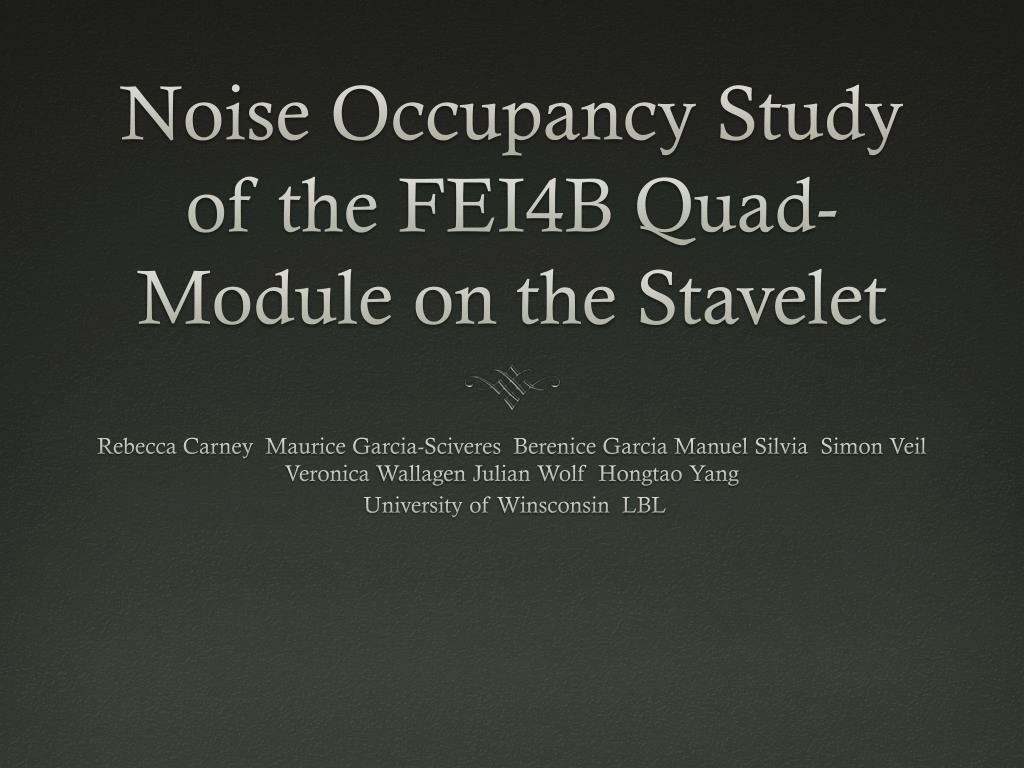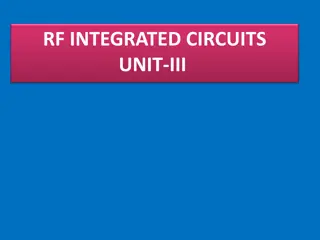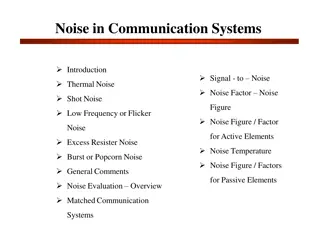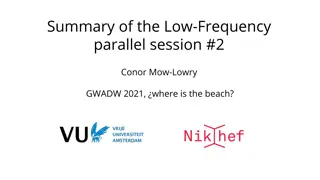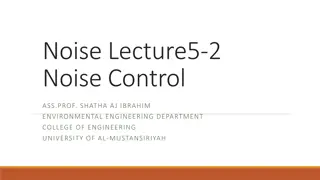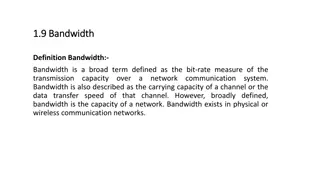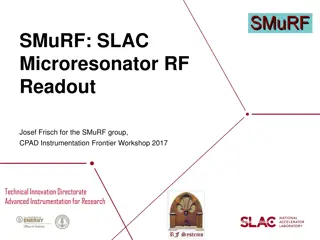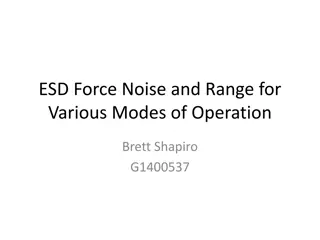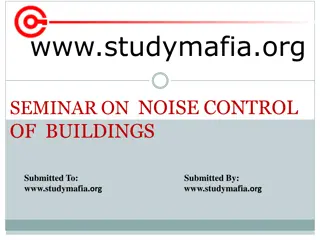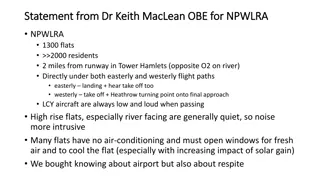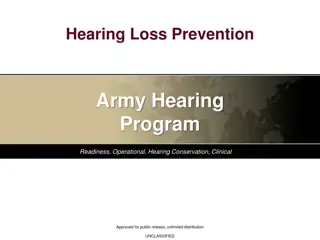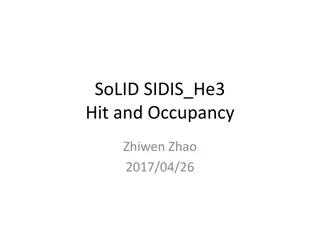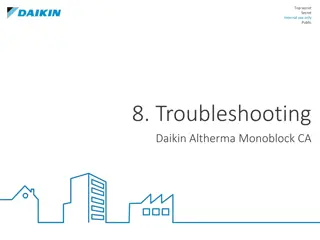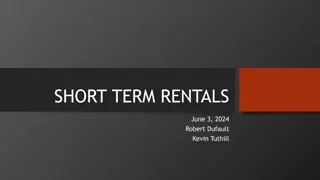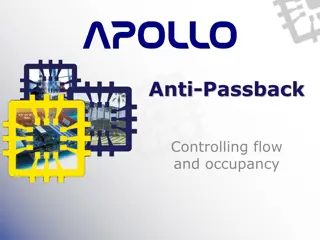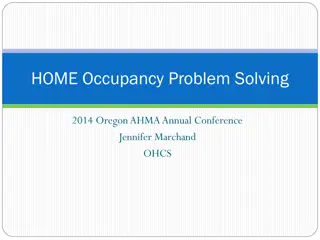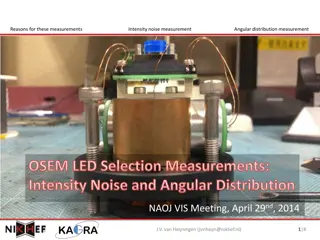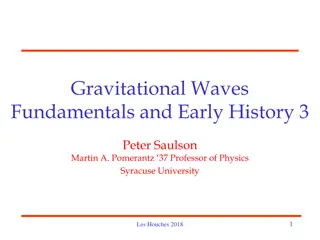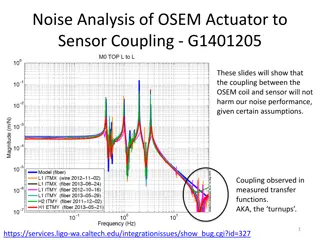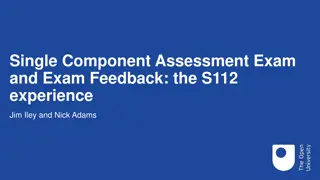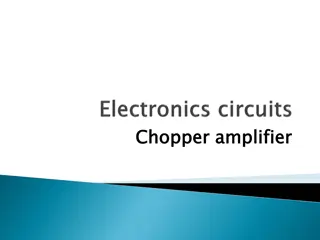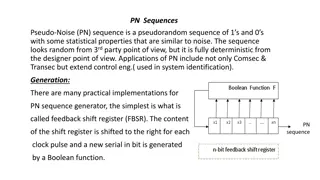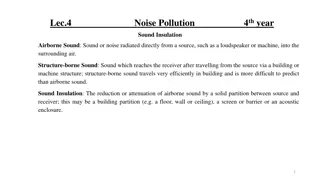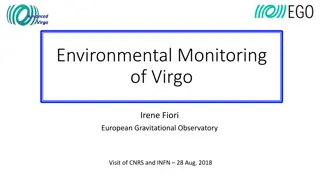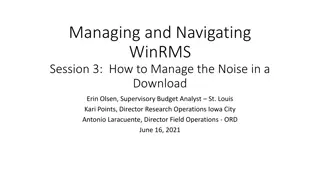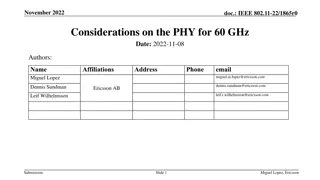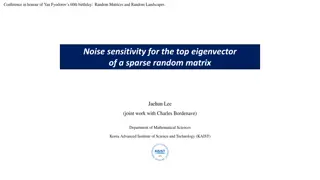Noise Occupancy Study of FEI4B Quad Module: Troubleshooting and Solution
This study delves into the noise occupancy of the FE-I4B chips on the quad module mounted on the Stavelet, addressing unexpected noise increases, problem tracing, and cross-checking between USBpix and RCE. Early studies pinpoint temperature control and suspected unstable grounding. The comparison between RCE and USBPix highlights no changes in temperature, power, and tuning. The solution involves adjusting the powering of HSIO from 110V to 12V to decrease noise levels. For more details, visit the provided links and scan results after resolving the issue.
Download Presentation

Please find below an Image/Link to download the presentation.
The content on the website is provided AS IS for your information and personal use only. It may not be sold, licensed, or shared on other websites without obtaining consent from the author. Download presentation by click this link. If you encounter any issues during the download, it is possible that the publisher has removed the file from their server.
E N D
Presentation Transcript
Noise Occupancy Study of the FEI4B Quad- Module on the Stavelet Rebecca Carney Maurice Garcia-Sciveres Berenice Garcia Manuel Silvia Simon Veil Veronica Wallagen Julian Wolf Hongtao Yang University of Winsconsin LBL
Introduction Goal: Study noise occupancy of the FE-I4B chips on the quad-module mounted on the stavelet with serial power About one month ago, observed unexpected increase in noise How we trace down the problem Latest noise scan results after fixing the problem Cross check between USBpix and RCE
Stavelet For more information on the Stavelet : https://indico.physics.lbl.gov /indico/conferenceDisplay.py ?confId=210 -Mount 5 Quad-Modules on Stavelet -The Modules are serial powered
USB Pix and HSIO USB Pix HSIO -Software for USB Pix: Stcontrol -Software for HSIO: Calibgui -Works with RCE
High Noise Problem on RCE. And Solution
Original Problem Before After Ran scans with same settings. Only ran scans at different dates. Presentation: https://indico.physics.lbl.gov/indico/getFile.py/access?contribId=0&res Id=0&materialId=0&confId=210
Early Studies -Checked Noise Occupancy under many different conditions to find out where the high noise is coming from -One of the lesson that we learned is that we had to put the temperature under control -At some point the suspicion is that the high noise is from the unstable grounding on the stavelet -We soldered wire jumpers between all module positions but it did not solve the problem.
Comparison RCE (HSIO) vs USBPix RCE USBPix Temperature, powering, and tuning stayed the same.
Solution to Decreasing Noise Fixed from where the HSIO was being powered from. Instead of 110V we changed it to 12V
Updated Results from HSIO after Problem Fixed Old Plot New Plot Noise appeared in the HSIO system.
Temperature for the Noise Scan temperature (C) 27 28 20 22 23 24 25 26 29 30 21 20 16:00 chip temperature during testing 21 16:00 temperature (C) 27 28 20 22 23 24 25 26 29 30 21 time (day min:sec) 22 16:00 chip temperature during testing 23 06:00 23 12:00 Threshold varying from 100 to 60 time (day min:sec) 23 18:00
NOISE: RCE vs. USBpix Measuring noise occupancy using USBpix/Stcontrol as cross check to results from RCE/calibGui based on identical tuning Scan FE1 on LBLQ1 on Stavelet with water temp. 15C Trigger rate=0.5MHz, trigger multiplier=1 USBpix/Stcontrol needs 20~30 more time to accumulate the same amount of events as RCE/calibGui: Any hint for the reason? Accumulate ~30M events for USBPix/Stcontrol ~[30 minutes] Accumulate~300M events for RCE/calibgui ~[10 minutes]
Noise occupancy: RCE vs USBPix RCE USBpix Very similar behavior -Noise busrt at AltFine = 60 -Right half of the chip noiser at low threshold -Similar noise patter for ganged pixels and hot pixels
Noise occupancy: RCE vs. USBpix Averaged noise occupancy - 4 10 - 5 10 RCE: 1114e (73) - 6 10 - 7 USBpix: 1199e (75) 10 - 8 10 - 9 10 - 10 10 LBLQ1 on-stavelet test - 11 10 FE1 40 Mbps - 12 10 - 13 10 600 800 1000 1200 1400 1600 Threshold / e Apply same mask to remove ganged/hot pixels USBpix consistently yields higher noise occupancy than RCE -Seems missing a constant scale factor -Different counting method for number of triggers?
Scanning AltFine : Low High vs. High Low Averaged noise occupancy 10 11 - Averaged noise occupancy 10 11 - 10 10 10 10 10 10 10 10 13 - 12 - 10 - 9 - 13 - 12 - 10 - 9 - 900 1000 1100 1200 1300 1400 1500 1600 1700 130014001500160017001800190020002100 FE1 40 Mbps LBLQ1 on-stavelet test FE2 40 Mbps LBLQ1 on-stavelet test AltFine high to low (with foam): 1271e (75) AltFine low to high (with foam): 1530e (82) Ref. scan (no foam): 1257e (74) AltFine high to low (with foam): 1751e (78) AltFine low to high (with foam): 2090e (87) Ref. scan (no foam): 1705e (76) Threshold / e Threshold / e Used to observe difference between scanning Altfine high low and low high
SCANNING: LowHigh vs High Low The discrepancy is now gone -Previous observation probably affected by unstable grounding of HSIO Averaged noise occupancy 10 9 - 10 8 - 10 7 - 10 Averaged noise occupancy 10 10 - 9 - 10 10 10 10 10 10 10 10 10 10 10 10 10 13 - 12 - 10 - 13 - 12 - 11 - 11 - 6 - 5 - 4 - 8 - 7 - 6 - 600 800 1000 1200 1400 1600 1800 2000 2200 FE1 40 Mbps LBLQ1 on-stavelet test FE2 40 Mbps LBLQ1 on-stavelet test 800 1000 1200 1400 1600 1800 2000 Low to high: 1210e (75) High to low (Ref. scan): 1211e (75) Low to high: 1409e (74) High to low (Ref. scan): 1402e (74) Threshold / e Threshold / e
Conclusion and Next Steps The chip was very noisy when we used the HSIO system. The wire that was supplying the power was unstable. USBPix output more noise than RCE. But they have similar evolvement in Noise Occupancy. It could be the software or hardware. Next Steps: Study Noise Bursts Since, the USBpix detects higher noise occupancy than RCE we want to find the reason why that happens.
Temperature for the Threshold Scan temperature (C) 27 28 22 20:00 20 22 23 24 25 26 29 30 21 chip temperature during testing 22 22:00 23 00:00 time (day min:sec)
Stability of the Noise Critical Point under different rate and trigger multiplier This study was done around the time point the problem occurred and it is repeated now that it is fixed. Averaged noise occupancy 10 10 - 9 - 10 Averaged noise occupancy 10 9 - 10 8 - 10 7 - 10 10 10 10 10 10 10 10 10 10 10 10 10 13 - 12 - 11 - 8 - 7 - 6 - 13 - 12 - 10 - 11 - 6 - 5 - 4 - 1000 1200 1400 1600 1800 2000 2200 2400 FE2 40 Mbps LBLQ1 on-stavelet test FE1 40 Mbps LBLQ1 on-stavelet test 800 1000 1200 1400 1600 1800 2000 EvtInt=1280,TrigCnt=16: 2154e (89) EvtInt=960,TrigCnt=12: 1666e (75) EvtInt=640,TrigCnt=8: 1669e (75) EvtInt=320,TrigCnt=4: 1582e (73) EvtInt=160,TrigCnt=2: 1591e (73) EvtInt=80,TrigCnt=1: 1626e (74) EvtInt=1280,TrigCnt=16: 1354e (77) EvtInt=960,TrigCnt=12: 1257e (74) EvtInt=640,TrigCnt=8: 1257e (74) EvtInt=320,TrigCnt=4: 1265e (75) EvtInt=160,TrigCnt=2: 1272e (75) EvtInt=80,TrigCnt=1: 1281e (75) Threshold / e Threshold / e
